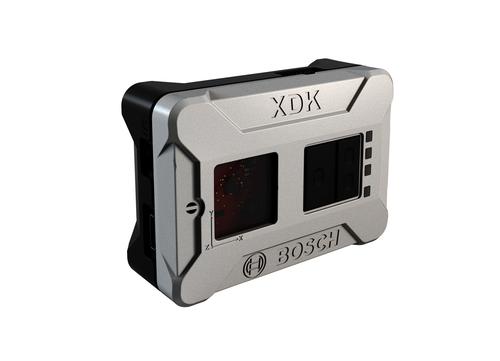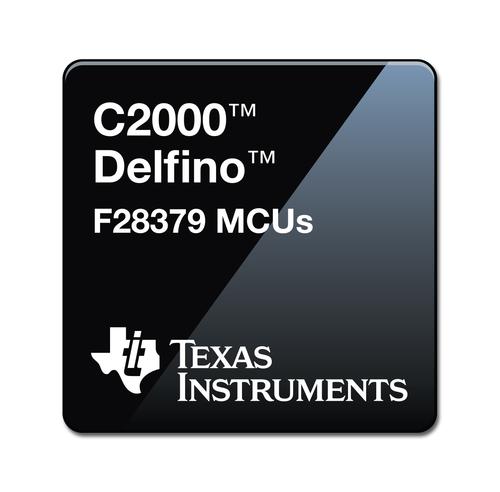Bosch and TI Want to Make Sensor Integration Simpler
Suppliers are rolling out hardware and software aimed at reducing the complexity of sensor-based applications.
March 9, 2016
As the Industrial Internet of Things (IIoT) gains momentum and sensors grow more challenging to implement, electronics manufacturers are beginning to provide help for harried designers.
Instead of calling on developers to deal with rising complexity, suppliers are increasingly offering packaged solutions – hardware and software development kits and systems-on-a-chip that makes sensor integration easier. The idea, they say, is to take the burden off designers whose development cycles are getting shorter and whose budgets are growing tighter.
“It’s all about reducing a lot of the basic stuff that would otherwise be drudgery for designers,” noted Tony Massimini, chief of technology for industry analyst Semico Research. “It goes to the issue of time to market. If you’re able to take some of the basic work off the shoulders of design engineers, then they can focus on what makes their product different.”

Bosch’s Cross Domain Development Kit (XDK) is targeted at system integrators and developers who want to quickly create a demo or proof-of-concept for sensor-based IoT applications. (Source: Bosch Connected Devices and Solutions, GmbH)
Indeed, in the limited time they have, most designers want to concentrate on making a better product, whether it’s a robot, elevator, climate control, or security system. That’s why Bosch Connected Devices and Solutions GmbH recently rolled out a Cross Domain Development Kit, or XDK, that’s targeted at system integrators and developers who want to quickly create a demo or proof-of-concept for IoT applications. “Too often, the problem is that when you want to do a proof-of-concept, you have to reinvent the wheel,” said Thorsten Mueller, CEO of Bosch Connected Devices and Solutions GmbH. “We wanted to come up with a solution — a very generic sensor that would allow you to do a fast proof of concept.”
READ ABOUT SENSORS:
Bosch’s solution incorporates both hardware and software. The hardware side includes a MEMS accelerometer, magnetometer, and gyroscope, as well as humidity, pressure, temperature, acoustic, and digital light sensors. The kit also incorporates Bluetooth and WiFi hardware, a 32-bit ARM Cortex M3 microcontroller, integrated antennas, a micro SD slot card, and a rechargeable lithium-ion battery. The software side includes an integrated development environment, algorithm library, sample applications, and access to an online community for support.
To simplify the prototyping process, Bosch also includes a small (60 x 40 x 22 mm) housing that contains the battery and incorporates push buttons and status LEDs. Through it, the XDK can be connected to a PC or mobile device.
Bosch claims that the XDK goes beyond the reference designs typically offered by semiconductor companies. “A semiconductor company will sell you a reference design and hardware components, but not a ready-to-use sensor,” said Mueller. “With our product, a user can easily design a specific sensor device based on the data they collect with the XDK.”
The idea, Mueller said, is to promote immediate productivity. “When you unbox it as an inexperienced user, you should have your first demo running in 10 minutes,” he said. “That’s the goal.”
Solutions for Digital and Analog Sensors
Similarly, a new system-on-chip (SoC) solution from Texas Instruments enables developers to more easily incorporate digital and analog position sensors, thereby simplifying the development of industrial robots, CNC machines, material conveyance systems, and servo applications of virtually all types.
TI says the new SoC eliminates the need for engineers to add special hardware for the purpose of interfacing with multiple types of sensors. By eliminating the need for those extra parts, engineers could cut test and development time of their new systems by months. “It saves them time and money,” said Brian Fortman, industrial drives and automation marketing manager for TI. “Why should they worry about adding those extra parts when it can all be done for them?”

Two new TI MCUs will support DesignDrive Position Manager technology. The technology will enable developers to more easily incorporate analog and digital position sensors. (Source: Texas Instruments)
TI’s new solution is made up of two parts — two new microcontrollers (MCUs), combined with the company’s new DesignDrive Position Manager technology. Position Manager enables developers to interface to both digital and analog position sensors. The two new MCUs — TMS320F28379D and TMS320F28379S — are the first to support it.
TI’s SoC solution could become an important tool for industrial machinery developers because it eliminates the need for them to add hardware -- such as analog-to-digital (A/D) converters, field programmable gate arrays (FPGAs), application-specific integrated circuits (ASICs), and extra microcontrollers — for the purpose of interfacing with multiple types of sensors. By doing so, it enables them to cut cost and development time, while freeing up board space, according to TI.
Today, Fortman said, the interfacing process can be tortuously long and complex. Development time can take up to two weeks, while system-level test can drain another one to two months. In contrast, MCUs employing Position Manager would handle those tasks up front because the MCUs incorporate the functionality to interface with EnDat2.2 BISS-C, resolver-type and SIN/COS sensors.
“Today, engineers have to do most of that interfacing on their own,” Fortman said.
Addressing the Skills Gap
Inside the factory, such solutions are expected to take on increasing importance, especially as a new generation of engineers takes over the factory. At the recent Pacific Design & Manufacturing Show in Anaheim, Calif., experts huddled to discuss the imminent problem of a growing workforce that isn’t prepared for the brave new world of smart plants. In a session titled, “No Worker Left Behind: Optimal Integration of the Industrial IoT with the Human Work Force,” industry leaders fretted over a skills gap that could develop when Baby Boomer engineers leave the work force.
“The knowledge is in the head of our senior engineers and they’ve soon to retire,” noted Julian Keith Loren, director of external engagement and solutions at GE Software. “The skills and tribal knowledge is going out the door and we have to have those skills coming in.”
One potential solution is to create technologies – like those from Bosch and TI -- that deal with the inevitable tide of IIoT complexity. “The development of plug-and-play technology always needs to be there,” said Paul Heine, strategic business development manager at Sick Inc. “One for the uneducated user and one for the super user.”
Indeed, such solutions will be needed. Whether for it’s for CNC machinery, material conveyance, industrial motors drives, or hundreds of other applications, suppliers say that the new breed of hardware and software solutions will be key. “With it, you can put your engineers on tasks that really differentiate your product,” said Fortman of TI.
Senior technical editor Chuck Murray has been writing about technology for 31 years. He joined Design News in 1987, and has covered electronics, automation, fluid power, and autos.
Like reading Design News? Then have our content delivered to your inbox every day by registering with DesignNews.com and signing up for Design News Daily plus our other e-newsletters. Register here!
About the Author(s)
You May Also Like



